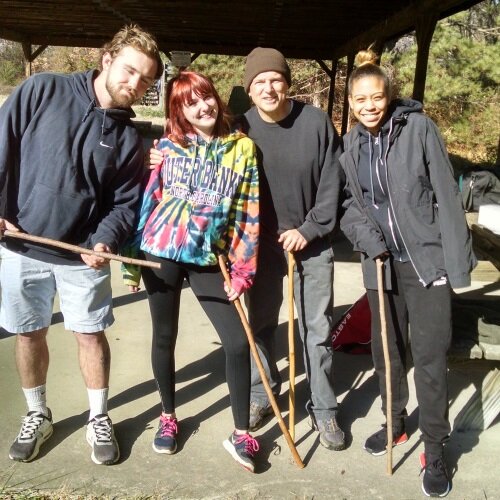What's the difference between a reason and an excuse? An excuse is a failure. A reason is a delay.
You are either going to reach your ultimate goal or not. If you don't reach the goal, your "reason" is an excuse. But if you reach the goal, your excuses are valid reasons for being delayed.
This week's T.I. is an excerpt from The Hourglass Way: Transform in 12 Weeks with Cabal Fang. Get it on Kindle, as a paperback, Nook book, or in any ebook format via Smashwords.
----------------------------------------------
WHAT TO DO IF YOU KEEP MESSING UP
Things happen. People and situations are not perfect or ideal. You are going to have bad days, bad weeks, maybe even a bad month or year. So what do you do if you wake up one day and realize you haven’t touched this workbook for a while – a few days, weeks or even months? Well, did you read the section above or not?
If you mess up on the program, all you have to do is get up, dust yourself off, and get back to work. Cabal Fang will change your life – but only if you stay with it. If you only missed a few days, you can pick up right where you left off. If you fall out of the program for a couple weeks, back up a week and resume. If you drop out for a month or more, it’s probably best if you start over.
Have you ever heard the expression, “I don’t know where you’re going but you can’t stay here.”? You picked up this workbook because you know you need to work on yourself. Obviously you don’t want to stay where you are. Well, the only way to get to a better place is to move and keep moving.
Listen to the lies you are thinking:
* “I don’t have time to do this program properly right now.” Nonsense. People make time for the things that are important to them. Take a little time away from TV, social media, web surfing, napping, snacking, partying, video games, etc. etc.
* “This is a great program but I can’t do it justice.” You know how you do justice to a great program? By not quitting it.
* “I don’t have the __________ (focus, strength, willpower, determination, etc.)” Of course you don’t. You know you don’t. I know you don’t. That’s why you’re in the program you chucklehead. Just do the best you can.
Bottom line? Doing the program half-assed is better than not doing it all. Nothing’s stopping you from doing it over again later! In Cabal Fang, we don’t judge. But neither do we whine, complain, or make excuses – and especially we don’t quit. We modify, adapt and overcome.
Enough talk. Let’s get started.
Excuses Excuses: Martial Arts Training Involution #177
Last week we took it easy. But not this week.
20 minutes on the heavy bag. Warm up for 8 minutes while you decide if you want to work on speed, accuracy, form, endurance, mobility, or power ("SAFE MP"). Don't just wail away on the bag without any purpose. Adjust round length to suit your goals (shorter when working on S or P, longer for E), add tape targets to the bag for A, etc. For more ideas read this.
20 minute Half Pyramid. Then set a timer for 20 mins and climb as high as you can before it beeps -- 1 of each, 2 of each, 3, 4, 5, etc. of the following: Sit-Out Push-ups, Shrimps, Drop Duck-Unders, Bear Walks (5 yards), Jump Squats, Bodybuilders, Jackknifes. Don't know an exercise? Read this.
Complete a nice long sit. Animals and humans, both predators and prey, have been doing it since the dawn of life on Earth. Contemplation (a.k.a "passive meditation") is baked into your DNA. If you want to explore how your mind works, learn patience and self-control, slash your body's production of cortisol and other stress hormones, relax more deeply than you thought possible, and strengthen your relationship with the divine, this is the thing for you. Set a timer. Beginners 10 mins., intermediates 30 mins., advanced folks 1 hour. Assume your meditative posture of choice. Narrow your eyes somewhat to minimize blinking. Do not fidget, wiggle, or scratch. Breathe in a slow, steady rhythm. Don't get up until the timer beeps.
Record everything you did and learned in your training journal. If it' ain't in the journal, it didn't happen.
































